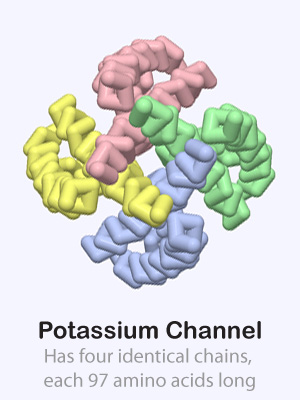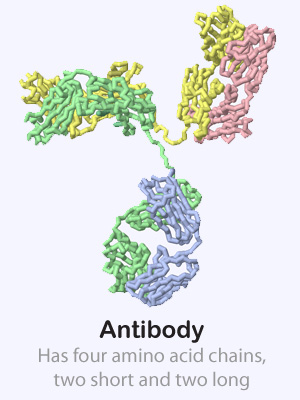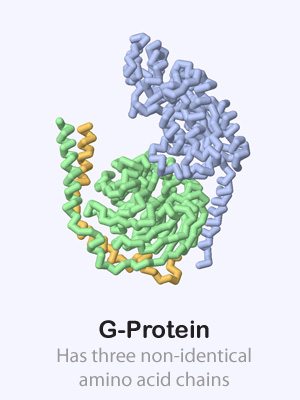

Protein Structure Tutorials
Secondary and tertiary structures are determined by a protein's sequence of amino acids, or primary structure. All proteins have primary, secondary and tertiary structure.
Some proteins are made up of more than one amino acid chain, giving them a quaternary structure. These multi-chain proteins are held together with the same forces as the tertiary structure of individual protein chains (hydrophobic, hydrophillic, positive/negative and cysteine interactions). Sometimes the various protein chains in a protein complex are identical and other times they are each unique.
Click on the proteins below to see their overall quaternary structure shown in the 3-dimensional display to the right. For each protein complex, the various chains have been colored differently.

|

|

|

© Copyright 1995- - MSOE Center for BioMolecular Modeling